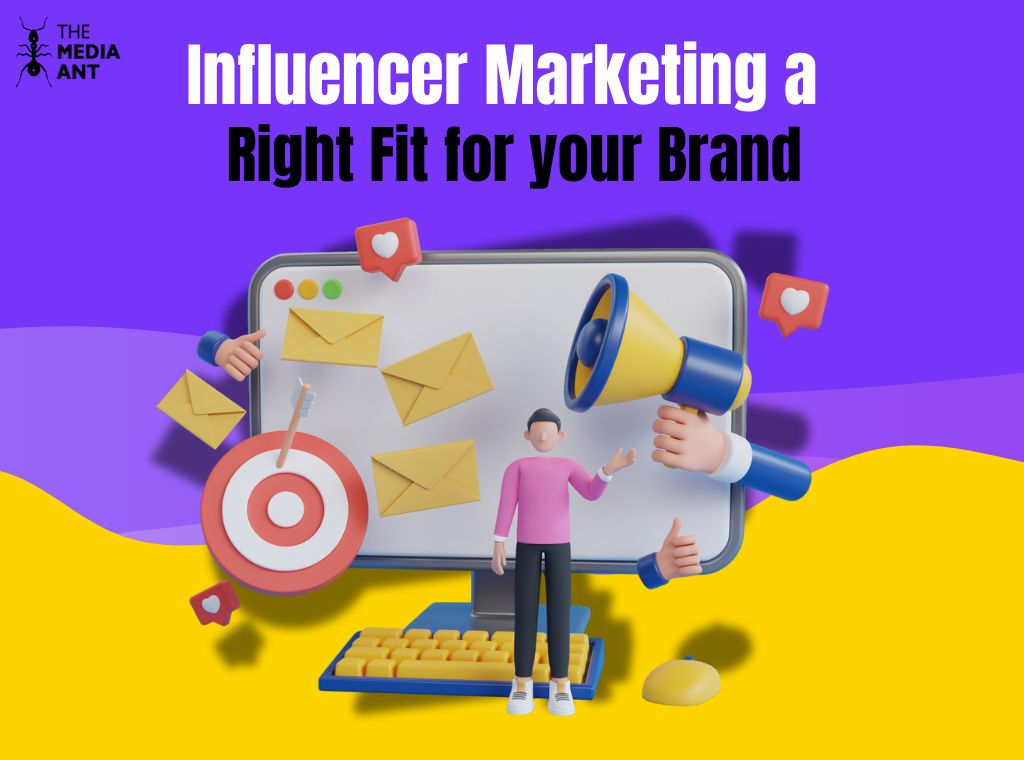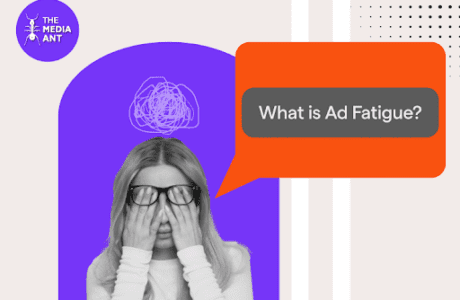Influencer marketing has emerged as a powerful tool for brands looking to enhance their reach and credibility. To determine if it’s the right fit for your brand, start by defining clear campaign goals such as brand awareness, engagement, or sales. Research and select influencers whose audience demographics and interests align with your target market. Evaluate their engagement rates and ensure their followers are genuine. Consider the cost factors, including follower count, platform, content type, and additional expenses. Establish a professional and personalized approach to building relationships with influencers, offering them creative freedom and clear expectations. Utilize influencer marketing platforms for efficiency and monitor campaign performance to ensure alignment with your objectives. By carefully selecting and collaborating with the right influencers, you can effectively boost your brand’s visibility and engagement in the digital landscape.
How to pick an Influencer for your brand?
Choosing the right influencer can make or break your marketing campaign. Here’s a quick guide to help you pick the perfect influencer for your brand:
1. Define Your Goals
Identify what you want to achieve with your influencer campaign—brand awareness, engagement, leads, or sales. Clear goals will guide your selection process.
2. Know Your Audience
Understand your target audience’s demographics, interests, and behaviours. Choose influencers whose followers align closely with your target market.
3. Evaluate Engagement
Look beyond follower count. Analyse the influencer’s engagement rate, including likes, comments, shares, and overall interaction quality. High engagement often indicates a strong, active community.
4. Check Authenticity
Ensure the influencer’s followers are real and their engagement is authentic. Tools like Social Blade and engagement rate calculators can help identify genuine influencers.
5. Align Values and Niche
Select influencers whose values and content niche align with your brand’s message and industry. Consistency in values builds trust and credibility.
6. Review Past Collaborations
Examine the influencer’s previous brand collaborations. Successful past campaigns can indicate their reliability and effectiveness.
7. Assess Content Quality
Evaluate the influencer’s content quality—photography, videography, and storytelling skills. High-quality content enhances your brand’s image.
8. Budget Considerations
Ensure the influencer fits within your budget. Micro-influencers can be a cost-effective option, offering high engagement at a lower cost.
9. Communication and Professionalism
Assess the influencer’s professionalism and communication style. A good working relationship is crucial for a successful partnership.
10. Long-Term Potential
Consider the potential for a long-term partnership. Ongoing collaborations can build stronger brand affinity and deeper audience connections.
How to approach influencers?
Approaching influencers effectively is crucial for building successful partnerships. Here’s a short guide to help you connect with influencers for your brand:
1. Do Your Research
Before reaching out, thoroughly research potential influencers. Understand their content, audience, and engagement to ensure they align with your brand’s values and goals.
2. Personalize Your Message
Craft a personalized and engaging message. Mention specific aspects of their work that you admire and explain why you think they’re a great fit for your brand.
3. Be Clear and Concise
Clearly outline your proposal. Explain what you’re offering and what you expect in return. Highlight the benefits of the collaboration for both parties.
4. Offer Value
Show how the partnership will benefit the influencer. Whether it’s monetary compensation, free products, or increased exposure, make sure the influencer sees the value in collaborating with you.
5. Use the Right Channels
Reach out through the appropriate channels, such as email, direct messages on social media, or influencer platforms. Respect their preferred method of communication.
6. Be Professional
Maintain a professional tone and be respectful of their time. Follow up politely if you don’t receive a response, but avoid being pushy.
7. Provide Creative Freedom
Allow influencers creative freedom in how they present your brand. Their unique voice and style are what make their content engaging and authentic.
8. Build Relationships
Focus on building a long-term relationship rather than a one-time collaboration. Genuine relationships can lead to more impactful and sustained partnerships.
How to hire Influencers?
Hiring influencers can amplify your brand’s reach and credibility. Here’s a concise guide to help you hire the right influencers for your campaigns:
1. Define Your Objectives
Clearly outline your campaign goals. Determine whether you’re aiming for brand awareness, engagement, leads, or sales. This will guide your selection process.
2. Identify the Right Influencers
Research and shortlist influencers who align with your brand values and target audience. Use tools like Instagram analytics, YouTube statistics, and influencer platforms to find suitable candidates.
3. Assess Their Fit
Evaluate the influencer’s content quality, engagement rates, and audience demographics. Ensure their followers match your target market to maximize campaign effectiveness.
4. Set a Budget
Determine your budget for influencer marketing. Consider factors like the influencer’s reach, engagement, and the scope of the campaign. Micro-influencers can be more cost-effective and offer high engagement rates.
5. Reach Out Professionally
Contact the influencers with a personalized message. Clearly explain your campaign, what you’re offering, and what you expect. Highlight the mutual benefits of the collaboration.
6. Negotiate Terms
Discuss and agree on terms such as deliverables, timelines, compensation, and content ownership. Ensure both parties are clear on expectations to avoid misunderstandings later.
7. Draft a Contract
Create a formal agreement outlining all agreed terms, including deliverables, payment, timelines, and usage rights. A contract ensures clarity and protects both parties.
8. Provide a Creative Brief
Give the influencer a detailed brief, including campaign goals, key messages, and brand guidelines. Allow them creative freedom to ensure the content remains authentic and engaging.
9. Monitor and Collaborate
Stay in touch with the influencer throughout the campaign. Offer support and feedback, and monitor the content to ensure it aligns with your brand and objectives.
10. Measure Performance
After the campaign, analyze the results against your initial goals. Use metrics like engagement rates, conversions, and reach to evaluate the campaign’s success and gather insights for future collaborations.
Cost of hiring an Influencer?
Hiring an influencer can be a highly effective marketing strategy, but it’s essential to understand the cost factors involved. Here’s a quick guide to help you navigate influencer pricing:
1. Follower Count
Influencers with larger followings typically charge more. Micro-influencers (10k-100k followers) are more affordable, while macro-influencers (100k-1M) and mega-influencers (1M+) demand higher fees.
2. Engagement Rate
Influencers with high engagement rates often charge a premium. Engagement indicates how actively their followers interact with their content, which can lead to better campaign results.
3. Platform
Costs vary across platforms. Instagram and YouTube influencers generally charge more than those on TikTok or Twitter due to higher production value and audience reach.
4. Content Type
The type of content influences cost. A single Instagram post or story is less expensive than a comprehensive YouTube video or a series of blog posts.
5. Campaign Scope
Larger campaigns with multiple posts, cross-platform promotion, or long-term partnerships will naturally cost more. Clearly defining the scope helps in accurate budgeting.
6. Industry
Influencer rates can vary by industry. Fashion and Beauty influencers might charge differently compared to tech or fitness influencers due to varying audience demographics and market demand.
7. Experience and Reputation
Well-known influencers or those with a proven track record of successful collaborations may command higher fees. Their experience and credibility add significant value to your campaign.
8. Additional Costs
Consider additional costs such as travel expenses, product samples, or production costs for high-quality content. These should be factored into your overall budget.
FAQs Related to Influencer Marketing a Right Fit for your Brand
How influencer marketing can build your brand?
Influencer marketing builds your brand by leveraging the trust and authenticity of influencers. When influencers endorse your products, their followers see genuine recommendations, enhancing your brand’s credibility. This strategy increases brand visibility, engages target audiences, and drives conversions, ultimately fostering stronger customer loyalty and growth.
How influencer marketing can enhance your brand visibility?
Influencer marketing enhances your brand visibility by tapping into influencers’ established follower bases. When influencers share your content, products, or services, it reaches their engaged audience, expanding your brand’s reach beyond your own channels. This increased exposure helps attract new customers, boosts brand awareness, and positions your brand in front of potential customers who trust the influencer’s recommendations.
How do you get influencers to promote your products?
To get influencers to promote your products, start by identifying those whose audience aligns with your target market. Reach out with personalized pitches, offer incentives, and build mutually beneficial partnerships. Clear communication and transparency are key.





